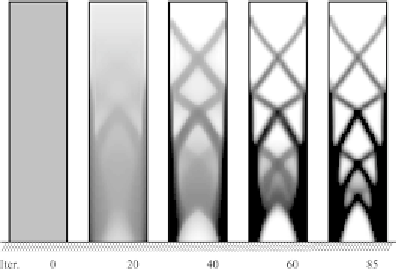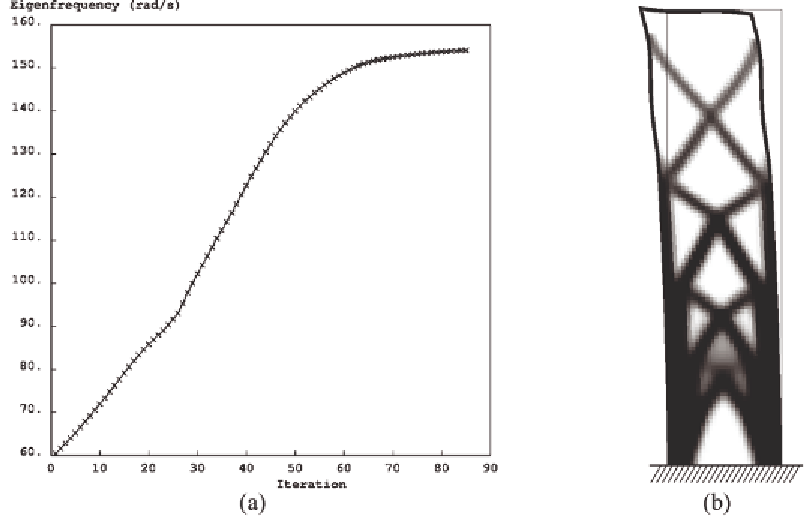Geology Reference
In-Depth Information
Figure 3. The initial design and topologies of the
first example at different iteration numbers
p
= 1, the initial and final eigenfrequencies will
change to 105.2 rad/s and 174.0 rad/s respectively.
5. MULTIPLE EIGENFREQUENCIES
By steadily increasing (or decreasing) an eigenfre-
quency, it is possible that its value reaches adjacent
eigenfrequencies resulting in multiple eigenfre-
quencies. The problem of multiple eigenvalues
in structural optimization was first addressed by
Olhoff and Rasmussen (1977). It is shown by Haug
and Rousselet (1980) that the multiple eigenvalues
are not differentiable in the Fréchet sense and can
only be expected to be Gâteaux (directionally) dif-
ferentiable. This finding rules out the validity of
sensitivities calculated by Equation (1.18) in case
of multiple eigenfrequencies. Ignoring this fact in
topology optimization will result in oscillation of
Figure 4 shows the values of the fundamental
frequency and the first eigenmode. The funda-
mental frequency has increased from 60.4 rad/s
in initial design to 154.1 rad/s after 85 iterations
showing 155% increase. Note that the values of
the fundamental frequency also depend on the
penalty factor. If we analyze these designs with
Figure 4. Evolution history of the fundamental frequency (a) and the first eigenmode of the optimal
design (b) in example 1


Search WWH ::

Custom Search